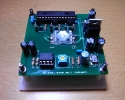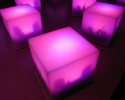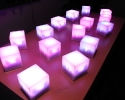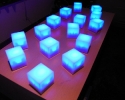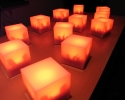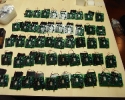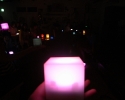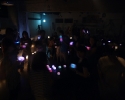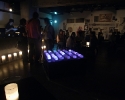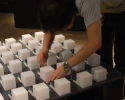command line wave
Get the latest Flash Player to see this player.
description
Command Line Wave’ is a work combining live performances and installations that use light cubes with handheld light cubes with built-in microphones and sounds for controlling the patterns of the light.
What you hear from a fax or a modem when they are connecting is the information transformed into sound under a certain rule and it somehow sounds cool. I came up with an idea of making sound for my live performances by generating sound under a certain rule. (Not a musical rule, but a rule that derives from a technical reason for communication.) The plan of commands to control the patterns of light on the cube becomes the rule and the sequences of those commands generated under the rule becomes music. Also, the connection of the cube has an uncertainty depending on the position and angle at which it would be placed. This is not a simple interactivity on a one-on-one level, but a work that generates not only micro rules but also macro and spatial rules by selecting commands according to the information received previously such as by how many percent the object is unreactive. The cube not only glows in response to sound , but also blinks and glows in a curve sometimes, regardless of the sound. How the cube glows can be controlled by sending sound commands. For example, in one scene, the cube blinks regardless of the sound, in the next scene, the cube reacts to low pitch sound and glows red. After that, the cube reacts to low pitch sound by glowing blue, middle pitch sound by glowing green, and high pitch sound by glowing red. Creating the cube object and designing the plan of commands is merely making a platform. There are many possibilities for which this can be presented. If one wants to enjoy such a media work using those commands and exchanging data, usually one needs a computer or a special interface device. However this work only requires speakers、and one can enjoy the results to the full extent. For example, you can input commands to an audio CD and the cube would respond fully to the sound. This work can be played using existing infrastructures.
credit
Concept : Daito Manabe + Motoi Ishibashi
Sound Programming : Daito Manabe
Device Programming : Motoi Ishibashi
Cube design : Tomoaki Yanagisawa











